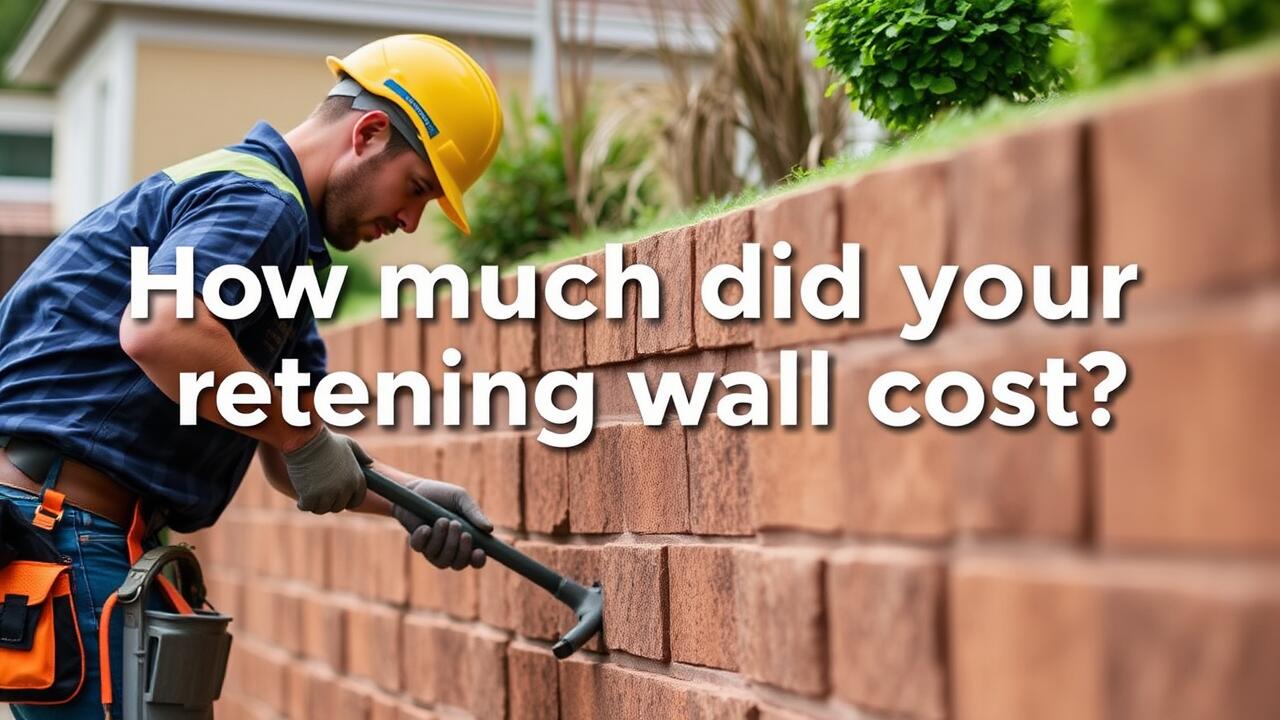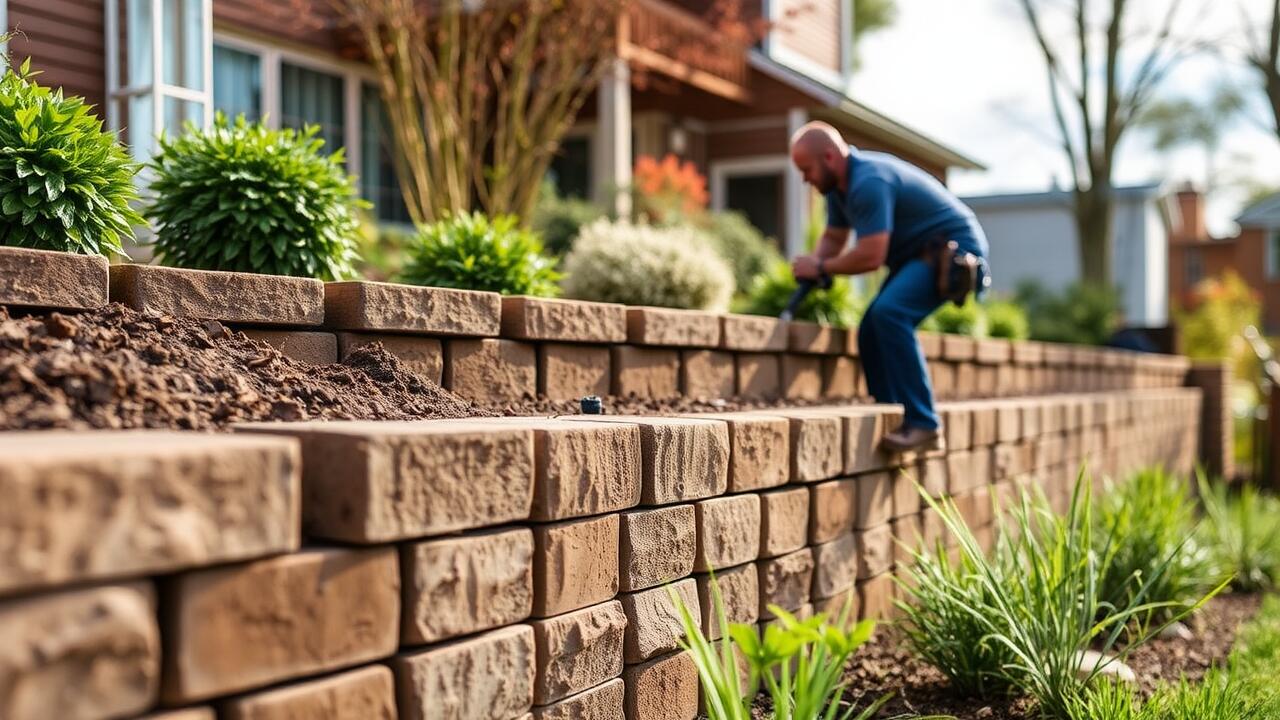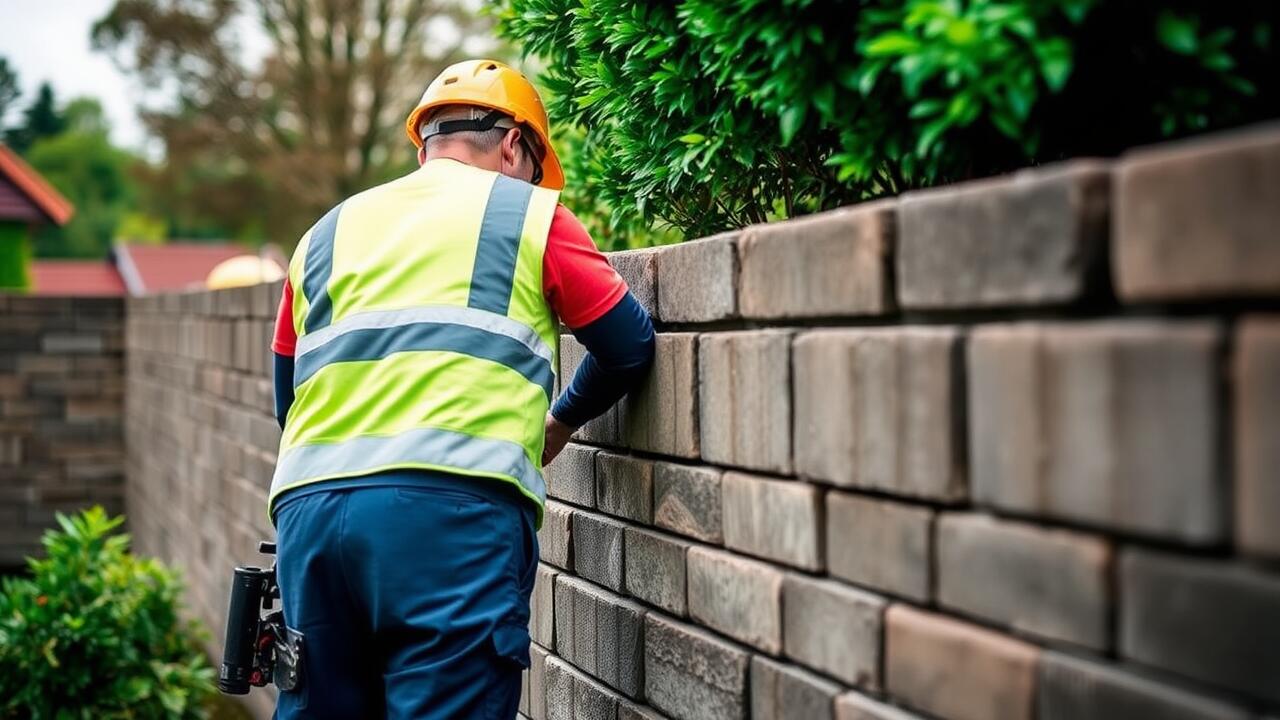
Long-Term Maintenance Expenses
Long-term maintenance expenses for a retaining wall can accumulate over time. Factors such as weather exposure, soil movement, and material wear contribute to the overall upkeep of the structure. Regular inspections can help identify small issues before they become significant problems. Addressing minor repairs promptly will minimize costs in the future and ensure the wall remains functional and visually appealing.
Retaining Wall Installation is just the beginning of the investment. Homeowners should budget for upkeep, which may include cleaning, sealing, and reinforcing the wall as necessary. Seasonal changes often bring unique challenges that demand attention. This ongoing commitment to maintenance is crucial for preserving the integrity and appearance of the retaining wall for years to come.
Budgeting for Upkeep and Repairs
Budgeting for the upkeep and repairs of a retaining wall is an essential aspect of ensuring its longevity. Regular maintenance may involve inspecting for cracks, drainage issues, or erosion that might compromise its stability. These tasks often require minimal financial outlay compared to more significant repairs necessitated by neglect. Setting aside a small budget each year for these routine checks can prevent costly upgrades or replacements later on.
When considering retaining wall installation costs, it is wise to factor in potential future repairs. Depending on the materials used, some walls might require more frequent maintenance than others. Investing in high-quality materials at the outset may reduce the overall maintenance costs in the long run. Planning for these expenses allows homeowners to manage their finances effectively while ensuring their retaining wall remains functional and visually appealing.
Enhancements and Custom Features
Enhancements and custom features can significantly elevate the visual appeal and functionality of your retaining wall. When considering retaining wall installation, incorporating elements such as texturing, lighting, or decorative stones can transform a simple structure into a focal point of your landscape. These features not only enhance aesthetics but can also contribute to the overall durability and performance of the wall, ensuring it effectively serves its purpose over time.
Investing in custom features during retaining wall installation can yield benefits beyond just appearance. Adding built-in planters or seating areas can create a more usable outdoor space, making your wall a functional element of your yard. Additionally, integrating drainage systems or erosion control measures improves long-term stability, protecting your landscape from damage while enhancing the wall's design.
Adding Aesthetic Value to Your Wall
Incorporating aesthetic enhancements into your retaining wall can significantly elevate its overall appeal. A stunning design goes beyond functionality, allowing the wall to blend seamlessly with the surrounding landscape. Consider options such as textured stone, decorative blocks, or even custom colors to create a personalized look. The right materials not only enhance visual interest but can also complement existing structures and garden features.
During the planning process of your retaining wall installation, think about additional elements like landscaping and lighting. Strategically placed plants, flowers, or shrubs can soften the hard lines of the wall and add a natural touch. Incorporating features such as integrated lighting can highlight the wall's unique design during nighttime, creating a striking visual effect. These thoughtful additions can transform your wall from a mere necessity into a striking focal point in your outdoor space.
Cost-Effective Alternatives to Traditional Walls
When considering retaining wall installation, many homeowners look for cost-effective alternatives that maintain both function and aesthetics. Natural stone and gabion walls are gaining popularity due to their relatively low material costs and unique visual appeal. These options incorporate readily available materials like gravel or recycled stones, allowing for the creation of sturdy walls without a hefty price tag. Their construction can often be completed with minimal labor, thereby reducing overall installation expenses.
Another option involves using concrete blocks, which provide durability at a fraction of the cost of poured concrete walls. These blocks come in various sizes and styles, making them versatile for different design preferences. Homeowners can easily stack or interlock these blocks for a secure retaining structure. This method not only keeps costs down but also offers the opportunity for DIY installation, further minimizing labor expenses while allowing for a personal touch in the design.
ExploringEco-friendly Options
When considering eco-friendly options for retaining wall installation, materials play a crucial role. Recycled materials like reclaimed wood or repurposed stone not only minimize environmental impact but also create unique aesthetic appeal. These choices help reduce waste and often provide a rustic charm that complements natural surroundings. Additionally, using permeable materials allows for better drainage, which can help prevent erosion and manage water runoff effectively.
Planting native vegetation around or on the wall can further enhance its sustainability. Incorporating living walls or green facades not only improves the visual aspect of a project but also aids in local biodiversity. These options contribute to improved air quality and can provide habitats for various species. By choosing eco-conscious methods for retaining wall installation, homeowners can achieve a balance between functionality and environmental responsibility.
FAQS
What factors influence the cost of a retaining wall?
The cost of a retaining wall can be influenced by several factors, including the materials used, the height and length of the wall, the complexity of the design, local labor costs, and any necessary site preparation or drainage solutions.
How can I budget for the maintenance of my retaining wall?
To budget for maintenance, consider regular inspections, cleaning, and any necessary repairs. It’s also wise to set aside funds for potential drainage issues or erosion control, which can arise over time.
Are there cost-effective alternatives to traditional retaining walls?
Yes, there are several cost-effective alternatives to traditional retaining walls, such as using timber, modular blocks, or earth-berming techniques. Additionally, eco-friendly options like gabion walls or living walls can provide natural aesthetics and stability.
What enhancements can I add to increase the aesthetic value of my retaining wall?
Enhancements such as decorative stone, planter boxes, lighting features, or different finishes can significantly increase the aesthetic value of your retaining wall. Integrating landscaping elements can also create a more visually appealing environment.
How do eco-friendly options differ in cost from traditional retaining walls?
Eco-friendly options can vary in cost. While some materials may be more expensive upfront, they often require less maintenance and can lead to savings in the long run. It's important to compare both initial costs and long-term maintenance when evaluating options.




